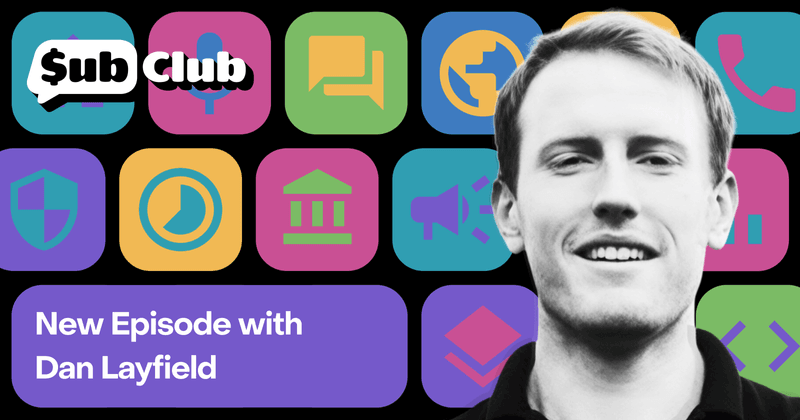Your sprints must pay for themselves: Dan Layfield’s product advice
What’s worth building? Dan Layfield shares a 3-bucket framework to help app teams prioritize features, fix churn, and ship faster.

One of the biggest challenges of building a subscription app business is determining how to invest your time and resources. There are so many competing priorities: developing new features, paying down technical debt, refining the user experience, launching strategic marketing initiatives… Where to begin?
Over the course of his career, Dan Layfield has asked himself this question many times. Dan, founder of Subscription Index, has spent years helping companies like CodeAcademy and Uber Eats develop and scale, and now consults with startups looking to grow their subscription revenue. On a recent episode of the Sub Club podcast, we sat down with Dan and asked him what advice he has for subscription app developers to get the most value out of their limited time and resources.
Estimate your ROI in advance
It may sound counterintuitive — how can you know the return on an investment you haven’t made yet? — but according to Dan, weighing the cost versus benefit of each planned project is one of the best ways of prioritizing efforts that will actually move the needle for your business. Let’s say each development sprint costs you $50k. If you can only expect a $30k return on the projects you have planned for that sprint, you need to consider other initiatives with higher payoff. As Dan puts it, “Your company literally will not be profitable ever if the output of your sprints doesn’t exceed the cost of your sprints.”
So how does Dan approach this? He recommends breaking down the work you have planned for a quarter into three buckets: technical debt clear-down, small updates and bug fixes, and big swings. “Big swings are typically where things get expensive, where you’re implementing giant new features or you’re taking a big shot,” he said. “I think those projects definitely need headroom analysis. You need a concept of what the upside could be for all the money you’re gonna put into them through development.”
Ship early, ship often
If you’re part of a startup, you’ve probably heard the mantra “Just ship it.” But Dan reminded us why this is important for your bottom line: “Projects in progress don’t do anything for your business — they only start to do something for your business when they go out the door,” he said. “So if you have big projects, chunking them up into milestones so you ship things incrementally and start to slowly test assumptions goes a long way.”
And if you’re worried about people copying your ideas if you release them early, don’t be. Sure, there are always going to be copycats, but in Dan’s experience, the teams that win are the ones that move the fastest. Remember, your competition can’t see the results of your testing and analytics — so they might unknowingly copy a feature or strategy that doesn’t work. Meanwhile, you’ve already learned from that experience, adjusted, and moved on to better ideas that will help you stay ahead.
Small changes, big wins
As tempting as it may be to focus on big, flashy new feature releases, Dan argues that some of the biggest wins actually come from fixing seemingly minor UX or performance issues in your app. High-traffic user flows like onboarding and checkout can have a huge impact on your churn rate and revenue, so these areas should be “polished to a mirror finish,” as Dan puts it.
Case in point: When Dan was at CodeAcademy, one of the highest-ROI efforts was rewriting all the error message copy on the company’s checkout page. The team spent two days downloading, updating, and re-merging all the error copy to help users understand precisely what went wrong with their payment and how to fix it. “Let’s say that effort very conservatively lifted checkout page conversion by 1%,” Dan said. “Well, 100% of your new revenue goes through the checkout page. So it’s really like you lift the whole business’s revenue by 1%.”
Conclusion
Check out this week’s episode of the Sub Club podcast to hear our full conversation with Dan.
You might also like
- Blog post
Modeling attribution on iOS: what works, what doesn’t, and how to choose
How to navigate the messy world of SKAN, AEM, and probabilistic attribution — plus two practical frameworks to get a clearer picture of campaign performance.
- Blog post
Is monetization hurting your app’s user experience?
Don’t trade short-term revenue for long-term trust. How ethical UX can still drive effective monetization.
- Blog post
Meta Ads in 2025: Expert tips from Marcus Burke
Marcus Burke discusses AI, UGC, and the lifespan of ad creatives.

